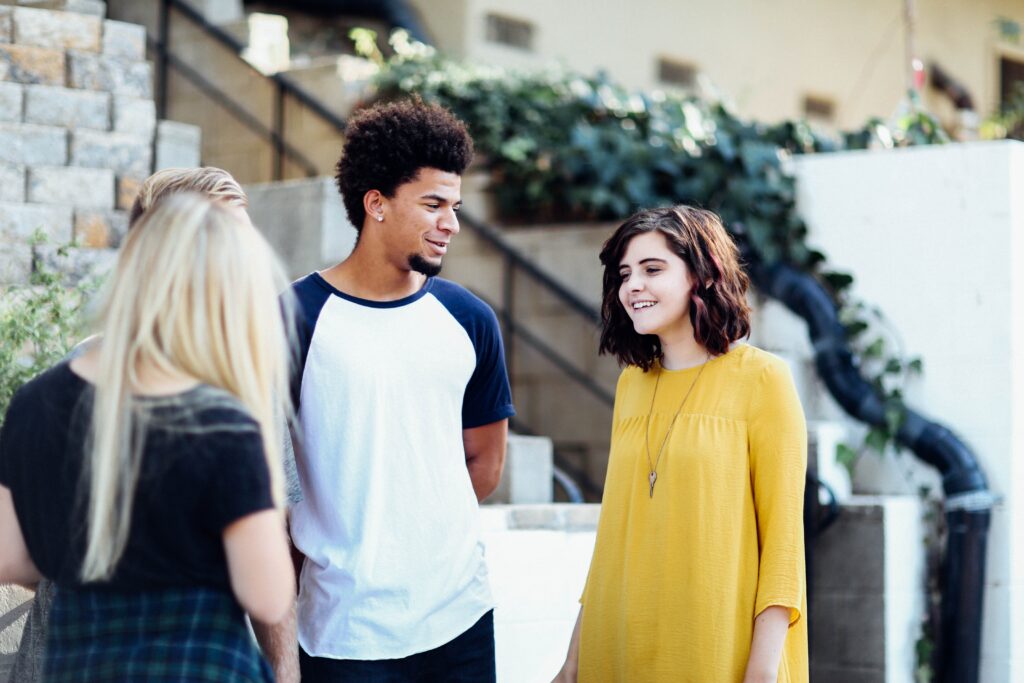Mapping the Journey of Child and Youth Participation in Philanthropy

Despite the challenges brought on by the pandemic, recently we have seen important support for children’s participation rights by major international agencies. The European Commission, the Council of Europe and the OECD have all included participation as a pillar in some of their flagship policies for children and youth. This institutional buy-in is foundational for shifting the power balance towards greater intergenerational justice, and realising children’s and young people’s rights and well-being.
Philea’s Children and Youth Thematic Network published in May 2022 its study on “Child and Youth Participation in Philanthropy”. The impetus for the study was the strong interest shared by the network members in children’s participation as a means through which children and young people promote individual and collective well-being, address social inequality, access better healthcare, improve educational pathways, and foster democratic societies.
The study is in itself a milestone on the journey of supporting philanthropic practice in becoming more inclusive and closer to those it serves. The study comprises two major elements: 1) a survey of 40 European philanthropic organisations on their investment in children and young people, as well as whether and how children and young people are involved in decisions about programmes and grants; and 2) in-depth case studies of 11 of these organisations.
The report encompasses a wide range of profiles in institutionalised philanthropy ‒ from operational to grantmaking, from small to large capacity. These foundations work very locally, but also run international programmes. The organisational diversity we found in this study proved that no foundation is too big or too small to embark on the journey of child and youth participation.
The 11 case studies are based on interviews with philanthropy professionals and the children and young people they work with. These stories share the context and motivations for engaging children directly; the processes through which children were involved; some of the learnings and outcomes derived from the project; and also some of the obstacles that had to be overcome.
The rise in interest for children’s participation is not separate from other streams of innovation in philanthropic practice. New models of governance, stakeholder involvement, participatory grantmaking, de-colonisation —these are expressions of the changing face of the philanthropic field, undergirded by a deep reflection on who holds power in society.
What’s philanthropy got to do with it?
Systemic change can only happen through collaboration across sectors around a shared purpose. We wanted to know how the European philanthropic sector was joining this momentum towards child and youth participation. We wanted to “catch them doing it right”, celebrate the wins (big or small), but also share the doubts, the struggles and the learnings.
From the experiences shared within the Thematic Network’s meetings, we knew that involving children in decision-making implied some degree of transformation: of the staff or board members initiating change; of the children and young people involved; or the organisation’s culture and practices. So we decided to capture the micro-stories of change rooted in the power of intergenerational relationships. For this reason, this project is a contribution to the ACT2GETHER initiative, which promotes partnership between children and adults as a means to achieve children’s rights.
Pathways to empowerment emerging from the survey and case studies
Below is a quick snapshot of the stories of child and youth participation told by the foundations involved in the study. They are roughly grouped around themes related to purpose or format of collaboration; contributing to foundation’s strategic and organisation development, including deciding on grant attribution; collaboration from design to evaluation; and building young people’s knowledge and financial capacity.
Helping foundations in their programmes and strategy
Some of the stories show collaborating with children and young people as a means to support foundations’ organisational change and strategy development. For all foundations this was a way to embody the principles they uphold, but also a way to ensure their programmes are more aligned with the needs of the children and young people they serve.
With over a third of its funding attributed to children and young people, the National Lottery Community Fund (UK) has been working with an advisory group of young people, many coming from disadvantaged backgrounds, who work very closely to inform the foundation’s policies and grantmaking cycle, but also to support staff development.
The Gulbenkian Foundation (Portugal) wanted to make sure the next strategy round of the foundation would reflect what young people felt was important about being young today, and how they envision the future. The foundation carried out an extensive consultation, which also resulted in guidelines for engaging youth in decision-making.
The Learning for Well-being Foundation (Netherlands) wanted to honour its commitment to supporting competent partnerships between children and adults. This impulse took the foundation to review its governance structures and create an intergenerational board in which half of its members are aged 18 to 24. All members of the board have equal voting rights and shared responsibilities.
Making decisions over resources and grants for their peers
The case studies include stories in which children and young people were supported and given the power to decide on attribution of grants, awards or resources.
Hil-Foundation (Austria) has been working with Girls Councils. The councils are composed of young people who identify as girls. Its members come from all over Austria to meet over a weekend and select, through a participatory process, the recipients of the foundation’s grants dedicated to youth.
The Anouk Foundation (Switzerland) organises an art project where children submit drawings that can win the chance of being transformed into murals in local paediatric wards by professional artists. An intergenerational jury composed of young students, art therapists, mental health professionals and artists give the award.
For one of its biggest calls for proposals, Fondazione Cassa di Risparmio di Cuneo (Italy) decided to set up a peer-evaluator panel composed of 44 individuals of which 18 were young students aged 16 to 18. The panel carefully analysed more than 100 applications submitted by schools for grants supporting health, inclusion, sport and outdoor education.
Collaborating side-by-side, from concept to evaluation
The Bertelsmann Foundation (Germany) leads ACT2GETHER Germany to tackle social inequality with and for marginalised young people. A flagship part of the project is an intergenerational camp called 2GETHERLAND which is planned and implemented by young people and adults together. In another project dedicated to creating child-centred policies for families and in the education sphere, the foundation’s researchers work side-by-side with both a scientific expert panel as well as a Young Expert Team to develop proposals on how to effectively address child poverty.
Bikuben Foundation (Denmark) worked with 18 young people (aged 13 to 30) with lived experience in alternative care, in a thorough design-thinking process to analyse the issues related to transitioning from foster care to living independently, and prototype solutions together with municipalities.
In their project “Transform Health”, the Botnar Foundation (Switzerland) brought together actors from all sectors and levels of society to advocate for better access to education through digital technologies. The foundation created a youth council to provide independent insight on how to leverage digital innovation to address the barriers that particularly affect young people’s access to health services and information.
Empowering young people through advocacy and financial capacity
Two of the stories portrayed in the case studies illustrate cases where foundations have invested in building child and youth-led grass-roots communities, sometimes attributing financial resources to children directly so they can lead and implement their own projects.
Porticus Foundation (France) partnered with organisations with expertise in community organising to build capacity of young people in local marginalised communities to advocate directly for their own rights and concerns through lobbying and media campaigns.
The Open Society Foundations co-funded the PEAKS project (participation, education and knowledge strengthening) in central Asia, which aimed to improve the education system in Kyrgyzstan. As part of the project, youth groups were awarded small grants which they could spend for the benefit of their schools and communities. The decision on both where and how to spend the money was up to the youth groups.
Seeds of inspiration
We hope the report and the stories it shares can inspire philanthropic organisations to take another step in the journey of involving children and young people in their philanthropic work. For those that have not yet begun that journey, the examples in the report provide arguments and ideas for practices that can help philanthropic organisations begin. For those that are already on the journey, then the new ideas and resources in the report can make their work more impactful and meaningful for all children and adults involved.
Excerpted from the report, “Child and Youth Participation in Philanthropy”, published in May 2022 by Philea.
Authors

